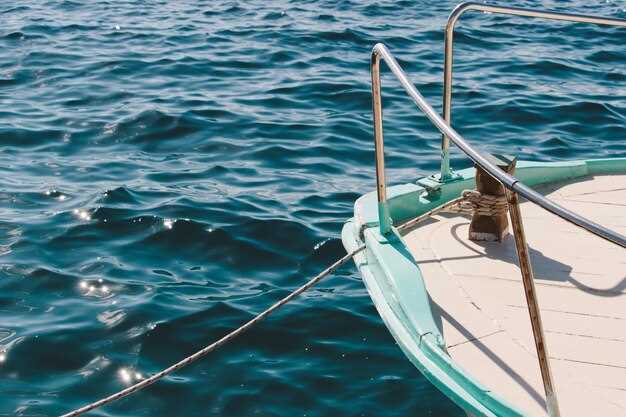
Coastal cruising offers a unique blend of adventure and tranquility, allowing sailors to explore picturesque shorelines and secluded coves. Choosing the right sailboat for this type of excursion is crucial, as it can significantly impact your experience on the water. Whether you are a seasoned sailor or a novice enthusiast, the right sailboat can enhance your coastal adventures, providing comfort, performance, and safety.
When selecting a sailboat for coastal cruising, several factors come into play. Stability and ease of handling are paramount, particularly in variable wind conditions typically encountered near the coast. Additionally, sufficient storage space and onboard amenities are essential for longer trips, ensuring that you and your crew remain comfortable throughout your journey.
In this article, we will explore some of the best sailboats designed for coastal cruising. From nimble and easily maneuverable models to spacious vessels equipped for extended voyages, our recommendations will cater to a variety of preferences and budgets. Prepare to set sail and uncover the ideal sailboat that will turn your coastal cruising dreams into reality!
Choosing the Right Size Sailboat for Coastal Cruising
When selecting a sailboat for coastal cruising, understanding the right size is crucial for comfort, safety, and overall enjoyment. Ideally, a sailboat for these purposes should be between 30 to 40 feet in length. This range provides a good balance of stability and maneuverability, essential for navigating coastal waters.
A boat in this size category typically offers ample living space for a small crew while remaining manageable for a solo sailor. Larger boats may provide more comfort and amenities, but they can also become cumbersome to handle, especially in confined areas or during inclement weather.
Consider the number of passengers you plan to take on your cruising adventures. A 30-foot sailboat can comfortably accommodate two to four people, making it suitable for small families or couples. If you intend to host more friends or family on your trips, opting for a boat closer to 35 to 40 feet can enhance comfort and provide additional sleeping quarters.
Another factor to consider is the draft of the sailboat. Shallower drafts allow for better access to anchorages and coastal areas, letting you explore areas that larger vessels cannot reach, which is often a highlight of coastal cruising. Generally, aim for a boat with a draft of less than 6 feet for optimal versatility.
In terms of payload capacity, ensure your chosen size can handle the equipment and supplies you will need for extended cruising. This includes provisions, safety gear, and personal items. A boat that is too small may lead to overcrowding and disadvantageous weight distribution.
Ultimately, selecting the right size sailboat for coastal cruising hinges on personal preferences, cruising goals, and the specific characteristics of coastal waters you wish to explore. Careful consideration of these aspects will enhance your overall sailing experience and ensure many enjoyable adventures on the water.
Top Features to Look for in a Coastal Cruising Sailboat

When selecting a sailboat for coastal cruising, several key features can enhance your experience on the water. Understanding these elements will help ensure a safe and enjoyable adventure.
- Stable Hull Design: A wide, beam and a shallow draft contribute to stability and reduce the risk of capsizing. Look for boats with a fin keel or a full keel for better performance in coastal conditions.
- Ease of Handling: For coastal cruising, consider a boat that can be easily sailed single-handed or with a small crew. Features like roller furling systems, self-tailing winches, and an easily accessible cockpit can make handling much simpler.
- Comfortable Living Space: A well-designed interior with sufficient headroom, a functional galley, and comfortable sleeping quarters is essential for longer trips. Look for models with good ventilation and storage space.
- Safety Features: Ensure the boat is equipped with safety equipment such as life jackets, fire extinguishers, and an operational VHF radio. A sturdy lifeline and non-slip deck surfaces add to on-deck safety.
- Robust Rigging: A reliable mast and rigging system are vital for performance and safety. Look for quality materials and consider the sail plan–sloop rigs are popular for cruising due to their versatility.
- Navigation and Electronics: Modern navigation systems, including GPS, autopilot, and chart plotters, are invaluable for coastal cruising. Ensure the boat has appropriate wiring and installation points for electronics.
- Storage and Capacity: Adequate storage for provisions, gear, and safety equipment is crucial. Check the boat’s carrying capacity to ensure it meets your needs, especially for longer excursions.
Each of these features significantly impacts the overall sailing experience. Prioritize them based on your intended cruising style and the duration of your trips to find the perfect coastal cruising sailboat.
Maintenance Tips for Your Sailboat during the Cruising Season

Regular maintenance is essential for keeping your sailboat in top condition throughout the cruising season. Begin with a thorough inspection of the hull and deck for any signs of wear or damage. Look for blisters, cracks, or signs of osmosis on the hull, and ensure that non-skid surfaces are intact to prevent slips.
Check all rigging components, including stays, shrouds, and turnbuckles. Make sure there are no frayed cables or signs of corrosion. Tighten any loose fittings to ensure your sailboat is ready for the wind. Inspect the sails for tears or UV damage, and consider cleaning and folding them properly after use to extend their lifespan.
Your sailboat’s engine also requires attention. Change the oil and replace filters before the season starts. Check the cooling system for leaks, and ensure that the fuel system is clean and functioning. Regularly inspect the battery and electrical systems, tightening connections and cleaning terminals as necessary.
Examine the safety equipment on your sailboat, including life jackets, flares, and fire extinguishers. Ensure everything is in good condition and easily accessible. Review the first aid kit to verify that all items are stocked and usable.
Furthermore, keep an eye on the bilge. Regularly check for water accumulation and ensure the bilge pump is operable. Clean the interior of your sailboat to prevent mold growth and maintain a pleasant living space during your adventures.
Finally, create a routine for checking and maintaining your sailboat throughout the cruising season. This proactive approach will enhance safety, improve performance, and prolong the life of your vessel, allowing you to enjoy countless memorable experiences on the water.



